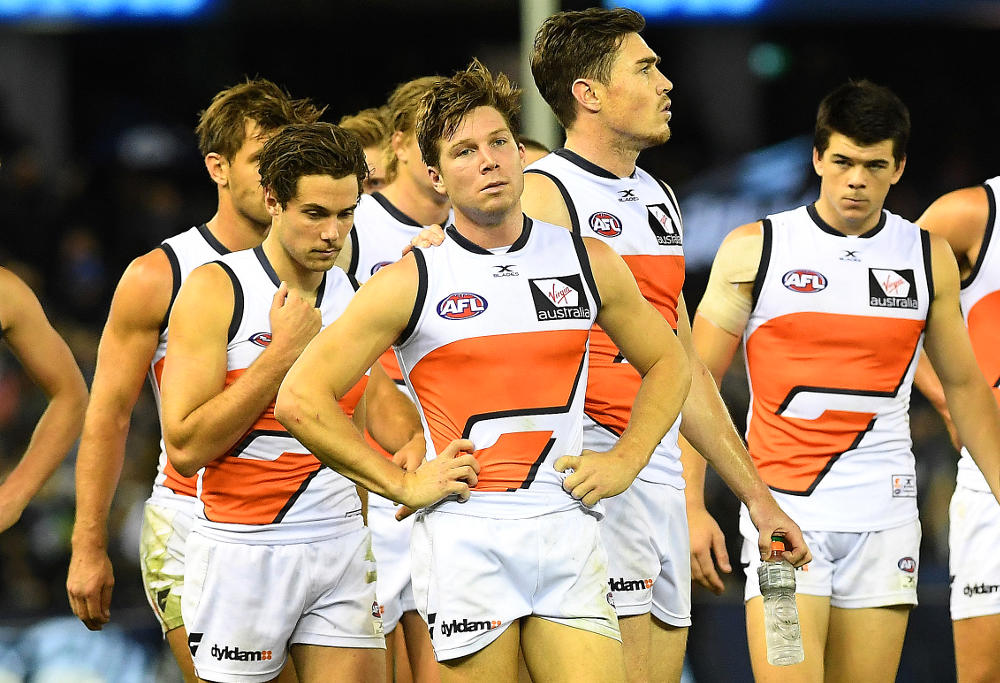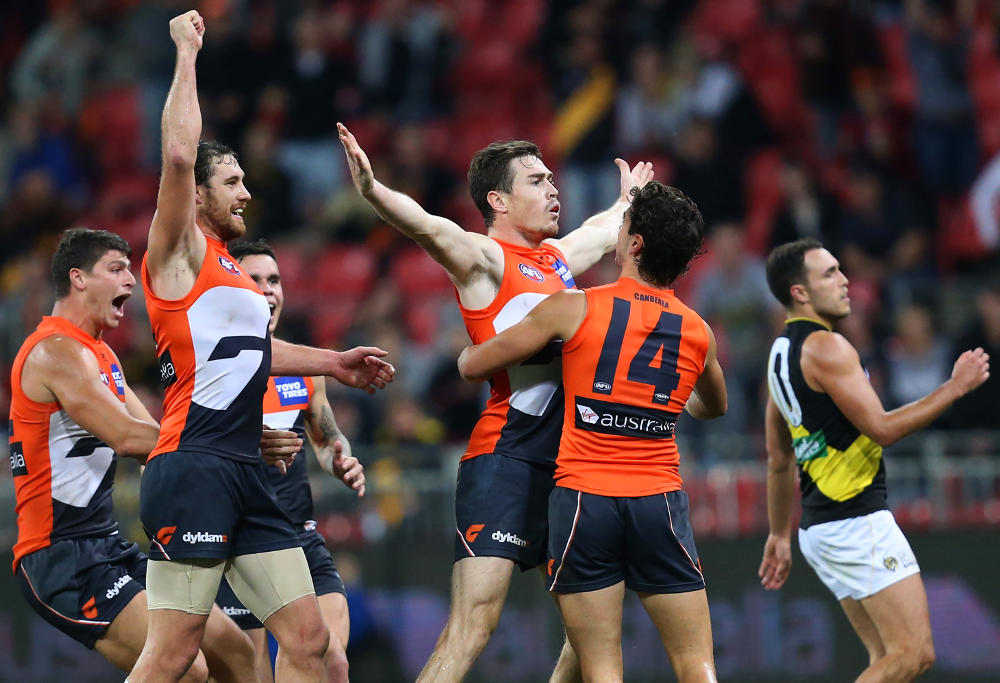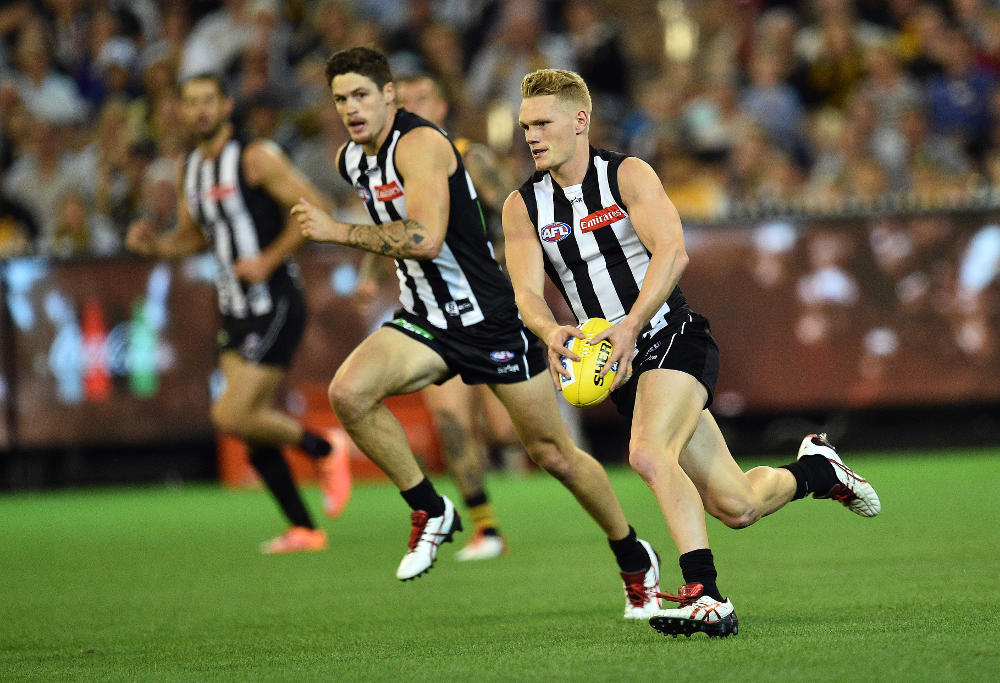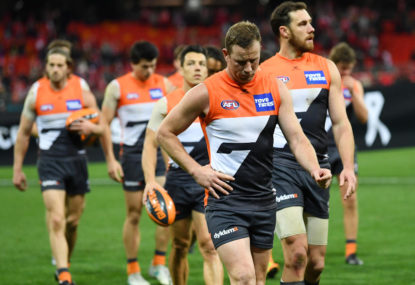Since before the GWS Giants even kicked a football in anger, there has been a widespread fear that they would one day come to dominate the game, having been set up with a more than adequate amount of talent to create a multi-premiership winning team.
Unlike Gold Coast, who collapsed almost as quickly as they built up, the Giants have gone from strength to strength for much of their existence, and last year played finals for the first time and went as far as a prelim final.
That in itself is no small achievement. A third of the teams in the league, many of them much more established than the Giants, can’t say the same inside the last decade. It was a coming-of-age story. The birth of relevancy.
Adding another elite mature star in Brett Deledio without losing any of their starting best 22 types over the off-season saw them installed as premiership favourites for 2017. I was skeptical and predicted in January that they would fall short – and while anything is still possible, I feel fairly confident there.
But no big deal, you would think. They’ve been walloped by injuries this year and, if they hadn’t been, might very well be miles ahead of the pack. They’ll surely get a clean run in 2018 or 2019 or some year coming soon, and no one will be able to keep pace.
Every discussion regarding the Giants at the moment is affected by this universal, defeatist belief that sooner or later a flag is going to happen for them – there’s just too much talent on the list for it not to. It’s a fate we’ve all accepted as an inevitability.
I might have thought the same at the start of the year, but the more I consider it, the more it seems to me that the Giants’ chance to really dominate the competition in the way we’ve long thought they inevitably would may have already snuck by.

(AAP Image/Julian Smith)
Their 2017 isn’t a write-off yet. In fact, their injury list has shrunk noticeably over the past few weeks even if it hasn’t led to results on the board. They’ll get Stephen Coniglio back this week, maybe Jeremy Cameron too, and Deledio could debut for the club soon.
The only key players who are still facing significant delays are Ryan Griffen and Tim Taranto – they’d be handy to have, but aren’t the most crucial pieces of the puzzle.
If all goes well on the injury front from here on out then a late-season resurrection is very much on the cards, so let’s not rule that out.
But for argument’s sake let’s assume they don’t go all the way in 2017. What does this team look like next year? That all hinges on what could be another groaner of an off-season.
Here’s a list of some key players out of contract at the end of the year currently for the Giants: Josh Kelly, Devon Smith, Jacob Hopper, Matthew Kennedy, Harrison Himmelberg and Steve Johnson.
Kelly is being pursued by the likes of North Melbourne, St Kilda – really anyone who would like to sign a generational midfielder and has their cheque book handy.
He’d be a devastating loss for the Giants – he’s arguably their best midfielder, and if not, certainly their classiest. He’s probably their next captain.
Devon Smith is also being chased by the likes of Collingwood and Geelong. Hopper has many suitors. Kennedy was already asked about by Carlton last year. Himmelberg would be a great fit at Adelaide, who bid on him in the draft, if they lose either of Mitch McGovern or Jake Lever (and his brother already plays there). And Johnson will certainly retire.
There’s some chance the Giants keep one or two of these players, but no chance they keep all of them, and every chance they have none at all in 2018. Let’s take a look at what their line-up looks like next year if everyone departs.
(To give them a little something in consolation, we’re going to assume the rumours that Paul Puopolo might move north are also true.)
2018 GWS
B: Nick Haynes, Aidan Corr, Nathan Wilson
HB: Heath Shaw, Phil Davis (c), Zac Williams
C: Tom Scully, Stephen Coniglio (vc), Lachie Whitfield
HF: Brett Deledio, Jeremy Cameron, Toby Greene
F: Rory Lobb, Jonathon Patton, Paul Puopolo
Fol: Shane Mumford, Callan Ward (c), Dylan Shiel
Int: Tim Taranto, Will Setterfield, Ryan Griffen, Adam Tomlinson
I’m not saying this is a bad team. It probably has more players that would be considered above average for their position than any other side in the league. But how many are genuinely elite?
The backline doesn’t have an All-Australian calibre member anymore – Heath Shaw is already winding down and a resurgence at his age is unlikely. Zac Williams and Nick Haynes are the best chances to step up and fill this gap, but aren’t guaranteed to.
Similarly, the midfield doesn’t have an AA quality player either, even though it is made up almost purely of either very good mature players or highly-rated draftees. If your name is Ryan Buckland look away now – it’s a symphony in B-plus.
Again, there’s the potential for someone to step up. Dylan Shiel is the man to do that if anyone can. Maybe Stephen Coniglio too, but I suspect we have already seen his best form, or very close to.
The forward line is where the real heroes are. Jeremy Cameron and Toby Greene are both game-changers who can finish their careers with multiple AA guernseys, club best-and-fairests, even Colemans and Brownlows. If Puopolo does come then there’s the genuine forward pocket they’ve lacked – if not, they still need one.
This is a very good team. It has just about no credible depth whatsoever, having had its listed raided by opposition clubs year after year after year, with too much salary cap tied up in the on-field stars to retain those not getting opportunity. But it can finish top four if not hit too hard by the injury stick.
Ask yourself this though – can it beat an Adelaide Crows side where Rory Sloane and Bryce Gibbs work in tandem? Can it compete with the holy trinity of Patrick Dangerfield, Joel Selwood and Gary Ablett? Has it any hope against the Kennedy-Hannebery-Parker-Heeney-Mills-Jones (kicking to Lance Franklin) behemoth it shares a city with?
Maybe you feel differently than me here, but I reckon no.

(AAP Image/Julian Smith)
Let’s check back in on the team and see how they’re doing in 2020, three years from now. To be nice, we’ll assume no one else jumps ship to a new club between now and then, though there are going to be a handful of retirements.
2020 GWS
B: Nick Haynes, Aidan Corr, Harry Perryman
HB: Nathan Wilson, Phil Davis, Zac Williams
C: Tom Scully, Stephen Coniglio (c), Lachie Whitfield
HF: ???, Jeremy Cameron, Toby Greene
F: ???, Jonathon Patton, ???
Fol: Rory Lobb, Callan Ward, Dylan Shiel (vc)
Int: Tim Taranto, Will Setterfield, ???, Adam Tomlinson
Holes are starting to appear now. The Giants have recruited really well when scooping away veterans from other clubs but they’re all gone now, and there’s really no proven talent on the list waiting to replace them. The only new face I’ve felt confident enough to add here is Harry Perryman.
Odds are to fill these gaps the Giants are going to have to draft them or recruit them from other clubs.
They certainly can pull that off – they’ll get another good influx of draft picks this year as the result of trades, and will continue to find the occasional bargain through their academy (though less often now that the Riverina is gone). But they will still face an uphill battle to retain these players.
Recruiting from elsewhere is still a strategy we should expect them to heavily pursue, but they will be limited here by the salary cap. Keeping so many quality players happy in Sydney’s west isn’t going to be cheap.
The good news is that so much of this team is now in the peak of its career and probably at least one or two more have emerged as genuine A-graders. I’m going to say Dylan Shiel has an AA guernsey and a top-ten Brownlow finish by this point, and Nick Haynes plays like a 2013 Michael Johnson.
It’s still quite a good team – probably a top-six side or higher most years. But it’s just one of several in that pack. It’s not going 22-0.

(AAP Image/David Moir)
What we’re seeing is equalisation at work. A team can be flooded with talent but so long as they’re forced to stick below the salary cap, things are eventually going to even out. This process has already begun at the Giants and is only going to continue.
Although the Giants are canny and creative traders, it’s fair to say they’ve lost value on just about every deal they’ve made since they entered the league. They’ve had simply too much talent to retain it all or even get a fair price most of the time.
For the most part, they’ve retained the cream of the crop, with probably only four or five losses that have really stung them – but they’ve still shed enough talent that you could field a very fine AFL team using ex-Giants alone.
Just for fun, here’s a former GWS best 22, including their potential post-season losses of 2017.
Once they were Giants
B: Lachie Plowman, Jack Hombsch, Tomas Bugg
HB: Jarrod Pickett, Caleb Marchbank, Shaun Edwards
C: Josh Kelly (c), Taylor Adams (vc), Dom Tyson
HF: Devon Smith, Josh Bruce, Will Hoskin-Elliott
F: Cam McCarthy, Tom Boyd, Rhys Palmer
Fol: Jonathan Giles, Adam Treloar, Jacob Hopper
Int: Jack Steele, Matthew Kennedy, Paul Ahern, Curtly Hampton
Emg: Jonathon O’Rourke, Anthony Miles, James Stewart
Depth: Harrison Himmelberg, Jake Barrett, Jed Lamb, Sam Frost, Andrew Phillips, Liam Sumner
That theoretical team would probably make the eight most years, and possibly do much better.

(AAP Image/Julian Smith)
The short version is this: talent is inevitably going to be redistributed among the clubs by the forces of the salary cap. Who wins premierships is still more likely to come down to factors like coaching, development, accurate recruiting, and tactical evolution – and a little luck – than it is who had the most high draft picks.
There will always be peaks and troughs for individual clubs along the way however. For GWS, the intersection of valuable draft, list management and salary cap concessions alongside access to academy talent and some canny recruiting from other clubs has created a significant peak.
That much talent just cannot stay static over the long term though, it is inevitably going to be unravelled by the market forces of the salary cap and the trade table, and the passage of time.
I suspect the Giants have already hit their highest talent mark over this year and last, and it was well timed as it arrived just after the decline of Hawthorn from superteam status, creating a situation where GWS could very feasibly snag a flag.
Unfortunately for them, they botched a golden opportunity to win it all last year, and while 2017 is still alive at this stage it looks like bad luck may have them beat.
While it’s impossible to say for certain what will happen in the off-season, it seems inevitable that the Giants will lose at least some good players and so have a smaller talent base in 2018 than they did this year. Retirements and perhaps more departures will make it smaller still in 2019 and 2020.
That’s not to say they couldn’t win a flag in that time, with that team – however they will have to do it not through boasting an unwieldy excess of talent, but instead with the same grit, innovation and luck that the rest of us must do.
As the years pass the Giants will become more and more similar to your average AFL team, and the notion of their supposed certain dynasty will fade from our minds. As their talent base shrinks, so shall the fear of an orange planet.

































































































